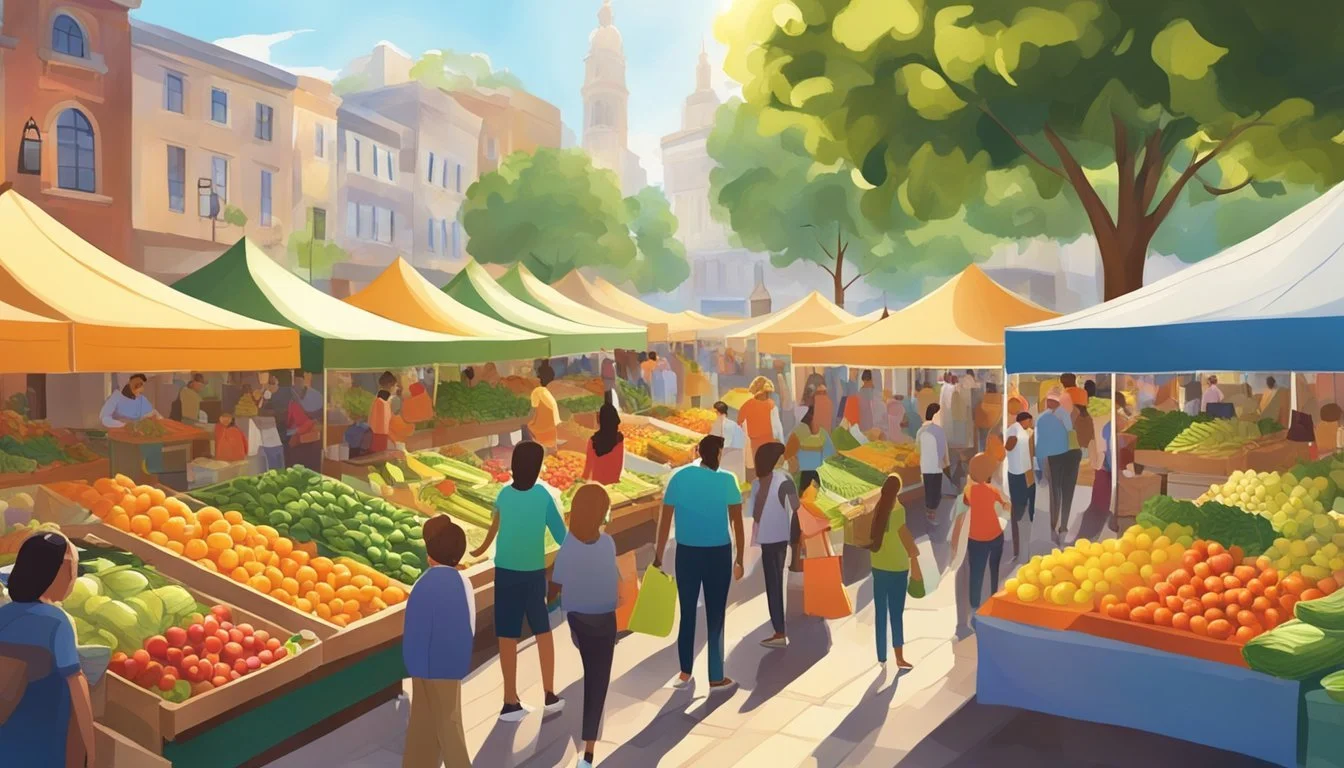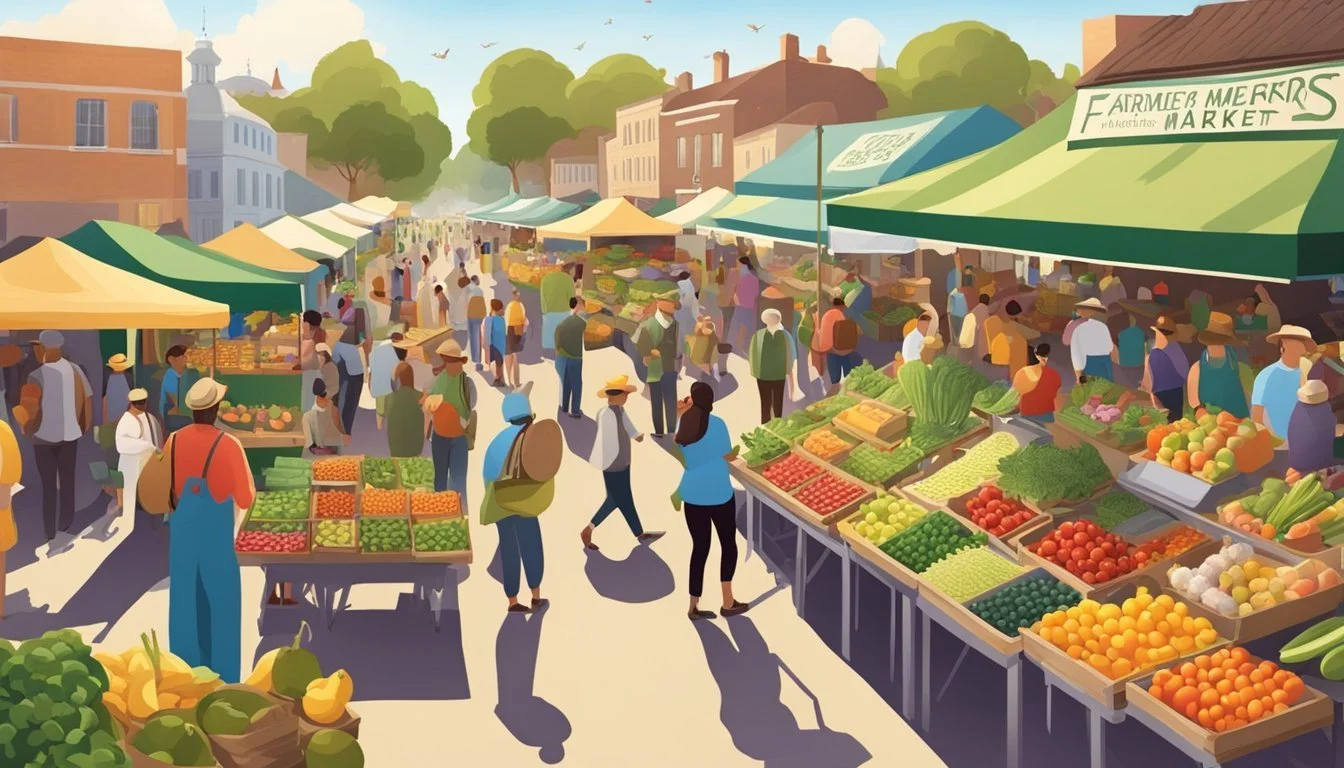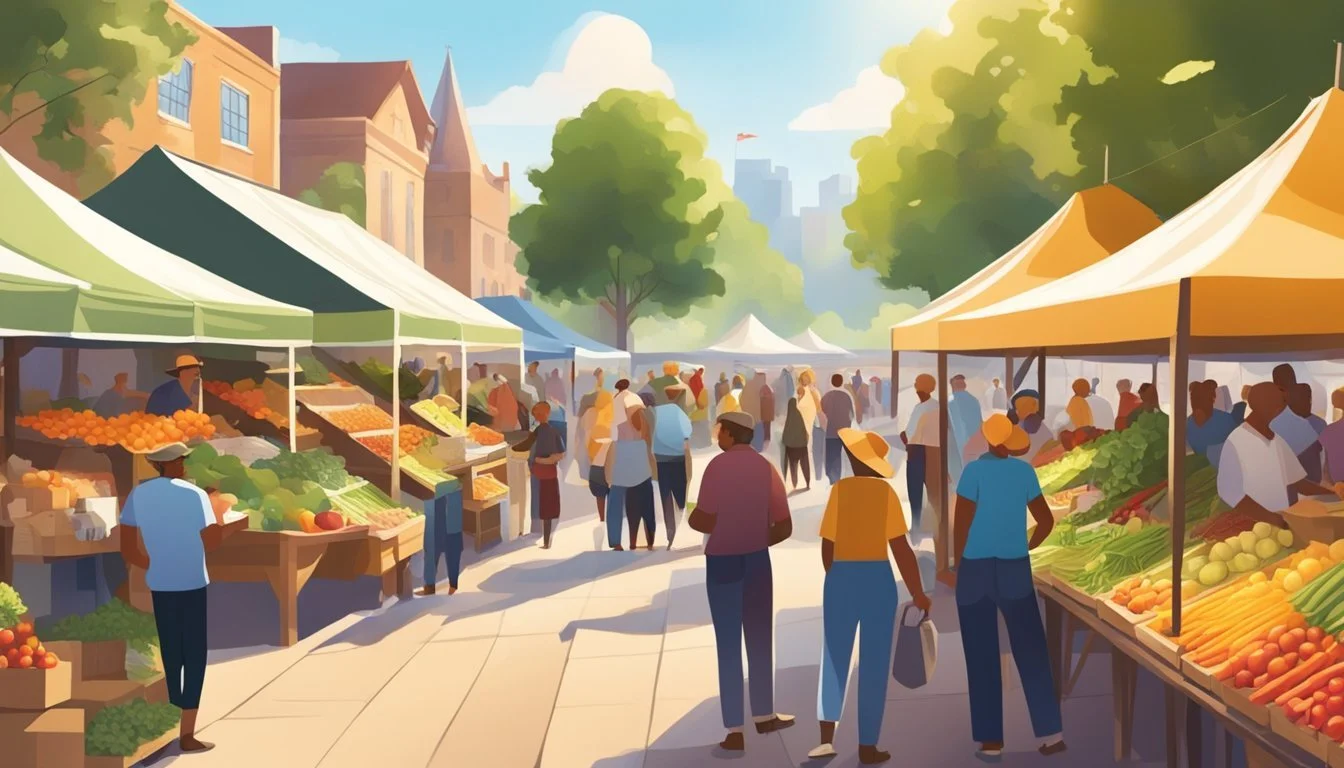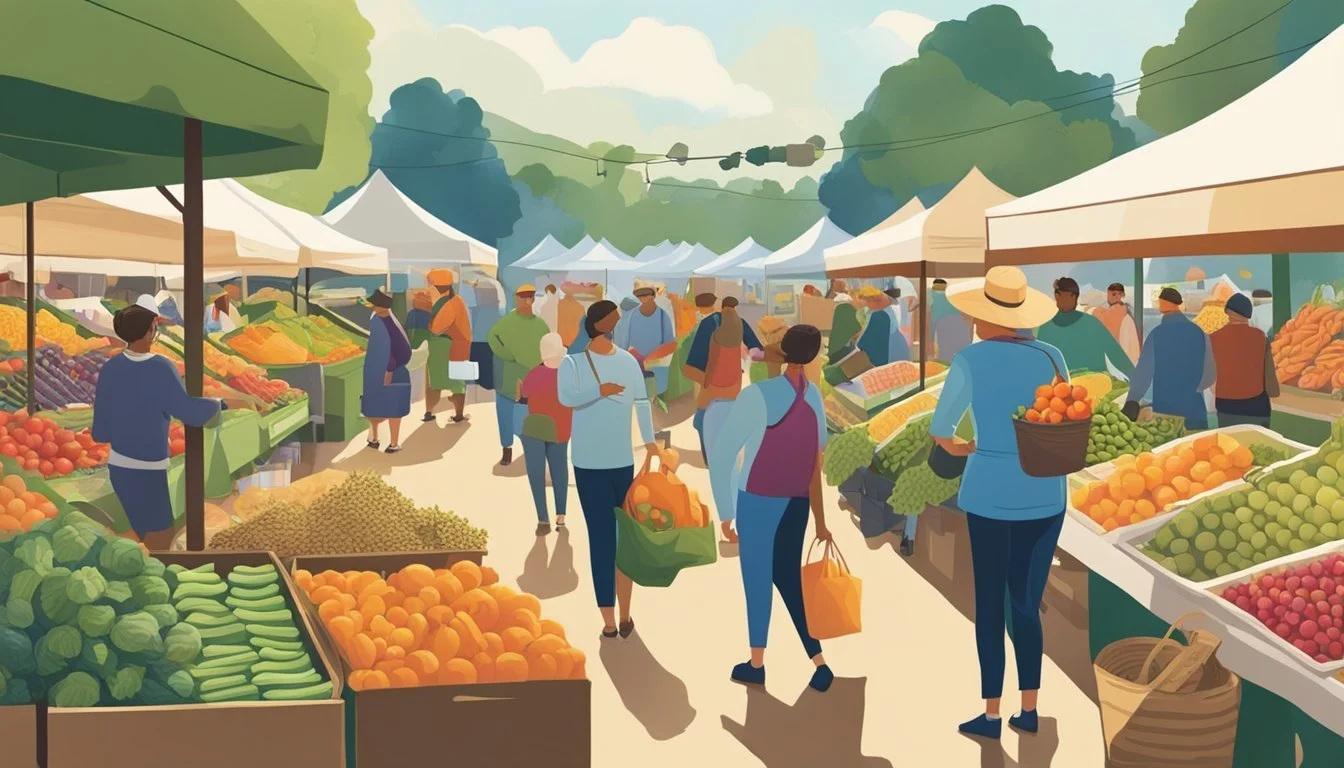The Best Time to Shop at the Farmers' Market
Maximizing Freshness and Deals
Determining the best time to shop at a farmers' market can significantly enhance the shopping experience. Farmers' markets are known for their fresh, locally-sourced produce, handmade goods, and a sense of community among shoppers and vendors. Arriving early at a farmers' market can be advantageous for several reasons. It offers shoppers the first pick of the freshest produce and often the widest variety of goods. Since items aren't picked over, one can find the best quality and selection during the early hours. Moreover, the atmosphere is less crowded, allowing more direct interaction with vendors.
On the other hand, visiting a farmers' market towards the end of the day might benefit those looking to find deals. Vendors are generally inclined to negotiate prices to move the remainder of their inventory, reducing the need to transport unsold items back. This time can be ideal for shoppers who enjoy haggling and are looking for a bargain.
Regardless of time, it's recommended that shoppers bring cash, particularly small bills. While some vendors have transitioned to accept card payments, cash transactions keep costs down for the farmers and can make the process more efficient. Whether one aims for the highest quality produce or the best deals, being knowledgeable about the optimal times to visit a farmers' market can make all the difference.
Understanding Farmers Markets
Farmers markets serve as a critical nexus between local agriculture and the surrounding community, offering a dynamic platform for the exchange of fresh, seasonal, and often organic produce. These markets not only bolster the local economy but also promote a health-conscious lifestyle rooted in the appreciation for farm-to-table commodities.
Benefits of Shopping at Farmers Markets
At farmers markets, consumers benefit from access to fresh produce that is often organically grown, contributing to a sustainably fed community and a reduced carbon footprint. Shopping at these venues supports local farmers directly, ensuring money spent circulates within the community, strengthening the local economy and creating a tight-knit food network. Here one can find a variety of unique, local items, from heirloom vegetables to artisanal cheeses, which may not be available in conventional grocery stores.
Community engagement: Farmers markets foster a sense of community, providing a place for residents to connect with each other and with the growers of their food.
Education: They are educational hubs where shoppers can learn about farming practices and the seasonality of food directly from the source.
Peak Seasons for Produce
The best time to shop at farmers markets is during the peak harvest seasons, which vary depending on the local climate and types of produce grown. This is when the produce is at its freshest, most flavorful, and nutritious. Knowing the typical harvest calendar for one's region can greatly enhance the shopping experience.
Spring: Tender greens, asparagus, strawberries
Summer: Berries, peaches, tomatoes, cucumbers
Fall: Apples, pumpkins, squashes, root vegetables
Winter: Citrus fruits, winter greens, nuts
Markets might offer an abundance of certain items when they are in season, often at better prices due to the higher supply. Shoppers can take advantage of this by preserving seasonal produce through canning or freezing for enjoyment year-round.
Planning Your Visit
Navigating the farmers' market efficiently requires a bit of forethought. One will find that knowing the best times to go, preparing a shopping list in advance, and having a clear understanding of their budget can significantly enhance the shopping experience.
Best Times to Shop
The early bird often gets the best selection at the farmers' market. Shopping early in the morning can provide one access to the freshest produce and the opportunity to speak more directly with vendors before the crowds arrive. However, if one seeks deals, visiting the market towards closing time may result in discounted prices as vendors aim to sell their remaining inventory.
Creating a Shopping List
To ensure a focused and efficient visit, one should create a shopping list. Knowing seasonal offerings can guide this list, as fruits and vegetables in season will be at their peak in both flavor and abundance. One might consider:
Fruits: berries, apples, peaches
Vegetables: leafy greens, root vegetables, tomatoes
Specialty Items: fresh herbs, artisanal cheeses, bakery goods
Budget Considerations
Manage the available budget by prioritizing essential items on the shopping list and being open to comparison shopping between different vendors. Here's a simple budget structure:
Essentials: Allocate 50% of the budget to must-have items from the list.
Seasonal Deals: Reserve 30% for seasonal produce or discounts that appear attractive.
Extras: Save 20% for impromptu purchases or specialty products.
Incorporating cash into the budget is critical, as many vendors prefer it and it can streamline transactions. Small bills are advantageous, allowing for quick and efficient payments.
What to Bring to the Market
When visiting a farmers' market, patrons should be prepared with the essentials for a successful shopping trip. This includes appropriate bags for transport and the preferred means of payment, ensuring a smooth and efficient market experience.
Reusable Bags and Containers
Farmers' markets are often ripe with a variety of fresh produce and unique finds that require safe transportation. Shoppers are advised to bring their own reusable bags, which not only supports sustainable practices but also provides sturdy containment for their items. A cooler is recommended for perishable products like dairy and meat to maintain freshness during transit.
Cash and Payment Options
Although some vendors may have the capability to accept electronic payments, shoppers should be prepared with cash to cover their purchases. Smaller denominations—like ones and fives—are particularly useful. It is a good habit to carry a mix of cash, credit card, and debit card options, as individual vendor payment capabilities can vary and some may incur a fee with card transactions.
Navigating the Market
When visiting the farmer's market, two key strategies can enhance the shopping experience: understanding how vendors set up their stalls and taking advantage of opportunities to sample and try new foods.
Understanding Vendor Layout
Vendors at farmers' markets typically organize their stalls to allow easy flow and visibility of products. Often, they're grouped by the type of produce they offer, such as vegetables, fruits, dairy, or meats. It's beneficial for shoppers to take a moment upon arrival to scan the market layout. Some markets follow a structured grid system, while others may have a more organic arrangement. By doing a quick walk-through, customers can strategize their path to ensure they don't miss out on any hidden gems.
Sampling and Trying New Foods
Farmers' markets are outstanding places for sampling fresh produce and discovering new flavors. Many vendors offer samples of their goods as a way to showcase their products and engage with customers. Shoppers should feel encouraged to try samples and inquire about the food's origin or preparation tips. This interaction often leads to learning innovative ways to incorporate unfamiliar produce into their diet, broadening culinary horizons. By sampling, consumers not only enjoy taste-testing but can also make more informed purchasing decisions.
Selecting the Best Produce
In the varied landscape of farmers' markets, identifying ripe, fresh items and understanding the benefits of buying in bulk or during seasonal offers allows shoppers to get the most value from their visit.
Identifying Ripe and Fresh Items
When selecting fruit, one should look for items that are firm yet give slightly under gentle pressure, indicating ripeness without over-softness which can lead to bruising. For instance, the skin of an eggplant should be smooth, shiny, and its flesh should rebound when pressed. Vegetables should generally be vibrant in color and free from blemishes or brown spots, embodying the peak of their freshness. Leaves should be crisp and not wilted, with stems that are sturdy.
Fruit: Look for a uniform color and avoid pieces with uncharacteristic softness or indentations.
Vegetables: Check for firmness and avoid any that are limp or showing signs of decay.
Buying in Bulk and Seasonal Offers
Purchasing in bulk can be beneficial, especially when dealing with in-season produce, which is often abundant and sold at more competitive prices. Shoppers should seek out seasonal fruits and vegetables, as they are typically at the peak of their flavor and nutritional content. When buying in bulk, it's essential to have a plan for storage or immediate use to prevent spoilage.
In-Season Offers: List the current seasonal offerings and inquire with vendors for bulk purchase discounts.
Bulk Buying: Assess the ability to consume or preserve large quantities before committing to bulk purchases.
Consumers should remember that while late shopping can result in discounts, some markets may not offer end-of-day price reductions. It is always recommended to ask the vendor before assuming the availability of such deals.
Supporting Local and Sustainable Farming
When one shops at the farmers' market, they become a key player in supporting local farming and sustainable agricultural methods. By doing so, consumers reduce the carbon footprint associated with food transport and promote environmentally friendly growing practices.
The Impact of Buying Local
Buying local has far-reaching impacts on both the community and the environment. When consumers purchase directly from local farmers, their dollars circulate within the local economy, bolstering financial stability for the farmers. Local farmers often employ sustainable methods, which can include crop rotation, composting, and natural pest control. This reduces reliance on chemical fertilizers and pesticides, benefiting the soil and surrounding ecosystems. A simple choice to shop locally can lessen the overall carbon footprint by minimizing the need for long-haul transportation, which is a significant contributor to greenhouse gas emissions.
Engaging with Farmers About Practices
Farmers' market shoppers have the unique opportunity to engage directly with the local farmers about their farming practices. These conversations can provide insight into:
Use of sustainable methods: Farmers can share how they implement crop diversification, water conservation, and non-GMO seeds.
Handling of produce: They can discuss their techniques for harvesting, cleaning, and transporting produce to ensure maximum freshness and minimal environmental impact.
Through these interactions, consumers not only learn about where their food comes from but also become informed advocates for sustainable methods within their communities. By showing preference for sustainably grown produce, shoppers can encourage more farmers to adopt eco-friendly practices.
Diverse Offerings Beyond Produce
Farmers' markets are treasure troves of local produce, but their appeal extends far beyond fruits and vegetables. Shoppers can discover a vibrant array of artisan foods and crafts, all of which contribute to a unique and multifaceted market experience.
Exploring Artisan Foods and Crafts
At a typical farmers' market, one might find a diverse selection of artisan foods including baked goods, meats, dairy, jams, sauces, and honeys. Handcrafted bread, pastries, and other treats are often made by local bakers using traditional methods and locally sourced ingredients, ensuring freshness and quality.
Local meats are available from farmers who can provide details about their sustainable farming practices. Visitors can find everything from beef and poultry to more exotic meats like bison (What wine goes well with bison?) or venison (What wine goes well with venison?). The availability of fresh, local meat offers customers a transparent option for adding protein to their diet, knowing exactly where it comes from.
Dairy products found at farmers' markets typically feature small-batch cheeses, milk, and yogurts. These products often come from nearby dairy farms where the animals are raised responsibly.
Jams, sauces, and honeys reflect the local flora and individual creativity of the area’s producers. These items not only add a burst of flavor to meals but also serve as a way to enjoy the local harvest year-round.
Beyond the edible items, markets often feature art and crafts made by local artisans. Handmade jewelry, pottery, textiles, and more provide a glimpse into the local culture and offer shoppers a chance to purchase unique souvenirs or gifts that support local craftspeople.
Farmers' markets continue to serve as hubs where the community can access a wide range of locally produced goods, connecting consumers directly with the sources of their food and art.
Additional Tips for an Optimal Experience
When shopping at a farmers' market, customers should consider the art of negotiation, be aware of special programs available, and understand the best practices for storing and preserving their purchases to extend their shelf life and value.
Negotiation and Prices
Shopping at a farmers' market offers opportunities for negotiation. While prices are typically reasonable, reflecting the direct relationship between producer and consumer, shoppers should not hesitate to haggle especially later in the day when vendors are looking to sell remaining items. However, respect for the vendor's pricing and efforts is important—successful negotiation should benefit both parties.
Utilizing Special Programs
Many farmers' markets participate in special programs such as the USDA's SNAP (Supplemental Nutrition Assistance Program). Those eligible for SNAP benefits can use their EBT cards to purchase fresh produce. Some markets even offer matching programs, doubling the value shoppers can get for their SNAP dollars. Customers should inquire about these programs to make healthy food more affordable.
Storage and Preserving Purchases
Proper storage is key to preserving the freshness of market purchases. Shoppers should:
Use airtight containers or proper canning techniques for fruits and vegetables.
Keep leafy greens in damp paper towels to maintain moisture.
Refrigerate perishable items like dairy or meats as soon as possible. Learning and applying food preservation techniques such as freezing, pickling, or dehydrating can greatly extend the life of purchases and reduce food waste.
Advantages Over Grocery Stores
Farmers' markets have become a popular alternative to grocery stores, offering several benefits in terms of quality and cost, as well as health advantages due to the nutritional value of the products they sell.
Comparing Quality and Cost
Quality:
Items at farmers' markets are typically fresher than those at supermarkets, as they go directly from the farm to the consumer with minimal transport time. This freshness often translates into better taste and texture.
Produce at farmers' markets usually has less, if any, packaging than grocery store items, contributing to a reduction in waste.
Cost:
Prices for produce at farmers' markets can be competitive with, or in some cases, cheaper than grocery store prices. For example, the price of bananas at the North Carolina State Farmers Public Market ranges from 63 to 85 cents per pound, potentially lower than some supermarket prices.
When purchasing from farmers' markets, consumers can also save money in the long term by supporting sustainable farming practices that reduce environmental impact and health costs associated with pesticides.
Health Benefits and Nutritional Value
Health Benefits:
The produce sold at farmers' markets often comes from local farms that use fewer pesticides and fertilizers, which can lead to a healthier food product.
Consumers have access to a wide variety of products, including organic and heirloom varieties, which can enhance diet diversity and contribute to better health.
Nutritional Value:
Locally grown fruits and vegetables are usually picked at their peak of ripeness when nutrient levels are highest, unlike supermarket produce that may be harvested early to endure long transportation and shelf life.
Farmers' markets provide an abundant source of fresh, nutrient-rich food, which can contribute to a balanced diet rich in essential vitamins and minerals.









